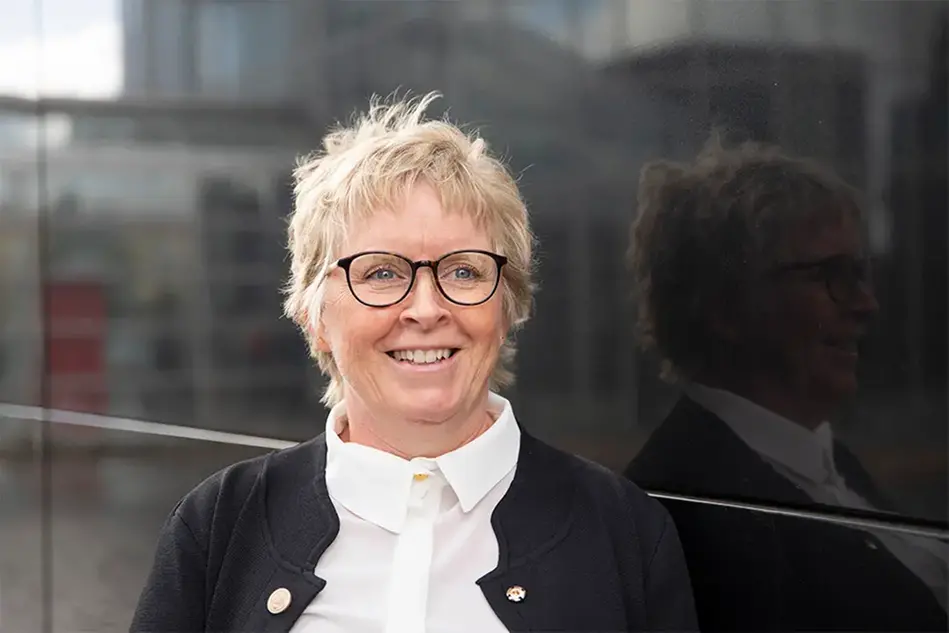Professor’s portrait: Helping people live a life they feel good about
Lena-Karin Erlandsson’s field of research is the balance between different types of activities and how they are affected by our health.
“I am passionate about helping people live a life that makes them feel good.”
Lena-Karin Erlandsson, Professor of Occupational Therapy
“The goal of occupational therapy is to enable people to do what they want and need to do, in the way they want to do it. I am passionate about supporting people to live a life that contributes to their health”, says Lena-Karin Erlandsson.
The foundation of the profession is the knowledge about people’s everyday activities, in and outside of their working life, and how this impacts on their health. In the early 1990s, the subject field of occupational science was introduced. To Lena-Karin Erlandsson, who was a qualified occupational therapist, this was a welcome event.

After 23 years at Lund University, in the spring of 2018, Lena-Karin Erlandsson became Head of the School of Health and Welfare at Halmstad University. Today she is also a professor. In both her roles, she wants to contribute to multidisciplinary: “Multidisciplinary provides breadth and dynamics for the University. Thanks to it, important questions can be answered based on new combinations of topics and methods."
“Occupational science links in with biomedicine, the other important field of occupational therapy. I felt that the occupational therapy that I had studied was too medical.”
Since then, she has been involved in developing an occupation-centered conceptual model for occupational therapists, ValMO, Value and Meaning in Daily Occupations. The professional education and training mainly uses models from the USA and Canada. ValMO is the only model to be developed in Europe.
Important to complete occupations
While working on her doctoral thesis, Lena-Karin Erlandsson interviewed women about their life as dual-working parents of young children. The women’s daily lives would form either low, medium, or high complexity occupation patterns.
“The results showed that women who were often disturbed or interrupted during their occupations were at risk of ill health and lower quality of life. They felt better when they could carry out occupations during longer intervals, without being interrupted. This was true at work as well as in the home.”
Occupations with clear start and end points often make it easier for us to become aware of what we are doing and how to evaluate what we have done.
“Today, many of us have actions which interrupt our occupations. You might feel like you have not got anything done by the end of the day. One example is how we let mobile phones interrupt our occupations.”
One category of occupations is the hidden or invisible occupations, such as brushing our teeth or going grocery shopping. When people’s everyday lives are turned upside down, hidden occupations can become main occupations.
“One example is a family where a child develops diabetes. For the parents, almost everything is now about managing sugar intake and insulin levels. The child’s hidden occupation, eating, becomes the parents’ main occupation.”
While many have trouble piecing together the ’life puzzle’, others experience intense loneliness and emptiness. One example is elderly people with not enough to do.
“After breakfast, the next thing to ‘happen’ is the home help services bringing you lunch. The elderly person’s occupation between breakfast and lunch then becomes ‘waiting’. There is a clear risk of ill health here. Everyone needs validation as the doer they are, both from themselves and in their interaction with others. The people we meet in society, those dependent on or in need of nursing and care, they are us.”
Programme for restarting and change
Lena-Karin Erlandsson has developed the group treatment programme ReDO™ for people who needs to make changes their daily lives. She has personally trained and certified around 700 occupational therapists in using this method, which is now well-established in primary care.
Text: Anna Vörös
Translation: Semantix
Photo: Dan Bergmark
About Lena-Karin Erlandsson
Lena-Karin Erlandsson was born in 1963 in Lund and graduated as an occupational therapist at Lund University in 1987. In 2003 she defended her thesis “101 Women’s Patterns of Daily Occupations” at Lund University. She became an Associate Professor of Occupational Therapy in 2009. Between 2012 and 2017, Lena-Karin Erlandsson was the head of the Department of Health Sciences at Lund University. Since 2018, she is the head of the School of Health and Welfare at Halmstad University, where she was appointed Professor of Occupational Therapy in 2019.

